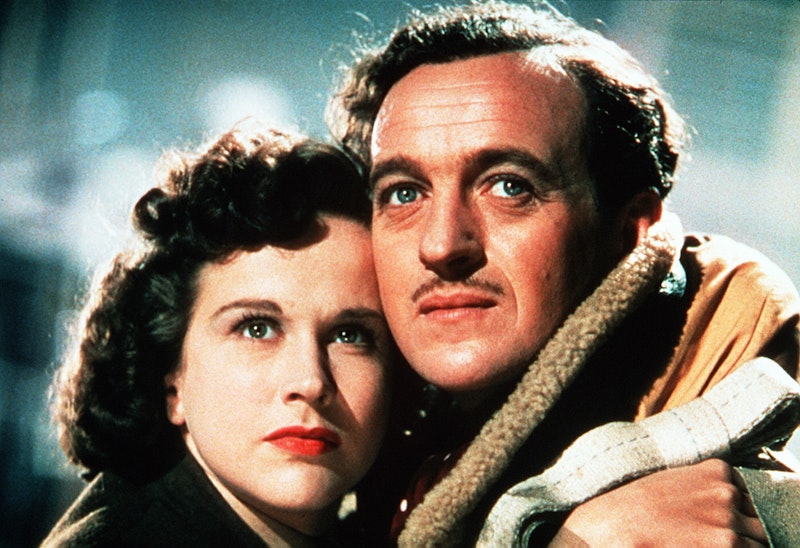The Archers have always been hit or miss for me. Or: one hit, one miss. Michael Powell and Emeric Pressburger, legendary post-war Brits, are in my experience one of the handfuls of entryways to classic film in that Janus-sphere of influence. I’d say it's fair to have them in a pantheon alongside the likes of Bergman, Fellini, and Kurosawa as “filmmakers for getting into film.” While I’ve liked many elements of The Red Shoes (1948) since I was a teenager, Black Narcissus (1947) never clicked for me, and ended my early exploration of the duo.
Some months ago on a whim—how I occasionally (and accidentally) watch some of the best movies ever made, like The Bridges of Madison County (1995) or The Misfits (1961)—I put on the Archers’ 1946 fantasy-drama A Matter of Life and Death and was stunned by how immediately it hooked me. I knew basically nothing about the film, except for a few often-used screenshots of massive matte paintings of some brutalist, bureaucratic Heaven and another of a man on a beach. Those images alone create a stunning juxtaposition of pure imagination played in black and white, and the naturalistic textures of the real world heightened by the vibrancy of Technicolor.
The film opens with a run of credits over a blue-brushed background. The strokes of paint are apparent, there’s a hand creating this world. As it moves through the names, the backgrounds’ texture becomes less obvious, and slowly it develops into a world of stars, a blue universe that the camera pans along. Painted white dots give the illusion of traversing space as the camera finds the moon, then the Earth, and then brings us into the clouds over Europe and a real fog rolls in in double exposure—the contrast, again, between the natural and the crafted. The visual achievement alone is incredible, but it's more than just a stylistic prelude, it serves to establish the worlds between which the story takes place.
Radio signals call out in the dark, in the mist, after a bomber raid over Germany. An military air traffic controller, an American woman, desperately tries to make contact with the other end of the airwaves. She picks up something, a man speaking in riddles or poetry, it's unclear if he even hears her. We cut to the inside of a bomber. Everywhere is broken glass, twisted metal, wind, fire, and blood. The cabin shakes violently as all the rickety bits move on their own. The yoke dances as the plane soars out of the sky. Over the body of his comrade is the other end of the line, the pilot on the radio. He’s relaying his last moments to a woman he’s never met nor, he thinks, he’ll ever meet, and they fall in love in his final seconds over the Channel.
It’s an energetic opening, bursting out of their foggy soundstage sets with the vitality of Kim Hunter and David Niven’s performances. It’s also one of the most intimate, drawn-in sequences in the film. That night fog paired with voices over the radio creates a wholly internal world that the sequence lives in. The film goes on to play with this subjectivity, often calling into question whether the heavenly world is real or just the imagination of an airman saved from death. Yet it's still never seen quite as beautifully, as viscerally in these first 10 minutes. It’s the way Niven first seems collected on the radio before turning his head to the left and revealing the blood running down his face. It’s the way Jack Cardiff’s camera is slightly out of focus on Hunter’s closeup, revealing the wisps on Hunter’s hair or the texture of the fabric on her olive-green army coat while her eyes are blooming with sorrow. I’m not sure a film has ever pulled me in as close in the first couple of minutes.

